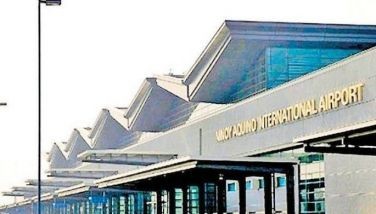Unplanned development

As the site of Metro Manila’s main fish port, Navotas could be a popular destination for tourists and foodies seeking fresh and affordable bounty from our tropical waters.
If you go to Navotas as the catch is being brought in, you can buy pails of fresh fish and shellfish at a fraction of the price in the wet markets and supermarkets of Metro Manila. About 380 metric tons of fish are unloaded on an average day at the fish port.
Last year the Department of Agriculture announced a P2.7-billion upgrade of the fish port, the country’s largest, to include the installation of cold storage and waste water treatment facilities, conveyors and a ship repair area. The upgrade is targeted for completion by 2015.
I haven’t checked on the progress of the upgrade. That amount isn’t going to produce a Tsukiji, Tokyo’s renowned fish trading center, where I once watched the auction at dawn of tuna from all over the world including those shipped from General Santos City. We should have aimed to create even a mini Tsukiji a long time ago. The P2.7 billion can be a good start – if the project will be on track, with no thumb twiddling, indefinite project reviews and corruption scandals.
Let’s hope the port upgrade doesn’t go the way of the mega-dike for the CAMANAVA area, or Caloocan, Malabon, Navotas and Valenzuela, which was supposed to have been completed way back in 2007.
Not even the freshest, cheapest seafood in Metro Manila can draw the average tourist to the small, scenic city of Navotas. The biggest worry: the city, like much of the CAMANAVA area, can be submerged in floods during high tide, even in good weather.
Neighboring Malabon, whose famous specialties are the eponymous pancit and Dolor’s sapin-sapin (layered rice cake), which started out near the city’s main church, “exported†its products around the country instead of waiting for visitors to brave the floods to buy the goods.
Experts should quantify the economic losses and health costs for CAMANAVA due to the regular flooding, which became worse after the Marcos regime filled the natural flood catchment in the Malabon-Navotas boundary, built the low-cost Dagat-Dagatan housing project, and neglected to install alternate routes for rainwater to wash out to Manila Bay.
Businesses in the flood-prone areas relocated and residents either moved out or learned to live with the constant risk of leptospirosis, skin diseases and respiratory ailments from constant exposure to polluted floodwaters.
Today taxpayers have spent about P5.5 billion for the Camanava Mega Flood Control Project, started in 2003 at a projected cost of P3.5 billion, and it still isn’t fully operational.
* * *
Yesterday, Metro Manila and many parts of Southern Tagalog and Central Luzon continued to reel from floods spawned by monsoon rains that were reportedly heavier than the rainfall dumped by Typhoon Ondoy. Visiting flood-devastated Cavite, President Aquino announced that flood basins and mega dikes would be completed within a year or two.
Going by the pace of project implementation in recent years, this could end up as a best-efforts pledge if not wishful thinking. Things are supposed to be different in the age of daang matuwid. In this administration, however, projects get stuck not just in the implementation phase but, it seems, right at the bidding stage. Some investors even grumble that the paralysis starts at the preparation of government feasibility studies.
In southern Metro Manila, property owners in the upscale exclusive communities rising beyond Ayala Alabang are suggesting the construction of something like the viaduct over the Candaba swamp in Pampanga. The owners were frustrated that flooding along the South Luzon Tollway past Alabang at the height of the monsoon rains this week cut them off from the rest of civilization.
After the Dagat-Dagatan project, private property developers were emboldened to disregard the numerous flood catchments and natural drains, building haphazardly around the National Capital Region. Metro Manila is an unplanned metropolis where anything goes, and never mind the consequences to the public.
There was indiscriminate construction even around the Laguna de Bay floodplain, with government housing agencies and local government units among the principal culprits. The proliferation of fish pens in the lake, many owned by local politicians, led to heavy siltation, aggravating the flood problem. No ban on plastic bags (replaced by paper bags from trees) can undo that damage.
In other parts of Metro Manila, there are many stories of neighborhoods now suffering from serious flooding after the construction of commercial establishments.
The other day, P-Noy said two major companies would face charges for constructing structures on waterways. He should not stop at the filing of charges; structures obstructing waterways should be demolished.
Apart from commercial and industrial structures, there is the perennial problem of squatting particularly along waterways, which serve – let’s admit it – as the shanties’ toilets.
There was no political will to relocate informal settlers during the summer months, because politicians needed the squatters’ votes in the May elections. Today the political will is still not there, this time because of the approach of the barangay and youth council elections in October. Politics wreaks havoc on everything in this country.
After the elections it will be heartless to dismantle shanties because Christmas is approaching. Then there’s Valentine’s Day 2014, followed by Holy Week… and then it’s rainy season again.
With unplanned development, the population boom, squatting, pollution and heavy siltation, rainwater simply has nowhere to go. Today we are suffering the consequences, with no immediate relief in sight.
- Latest
- Trending



























